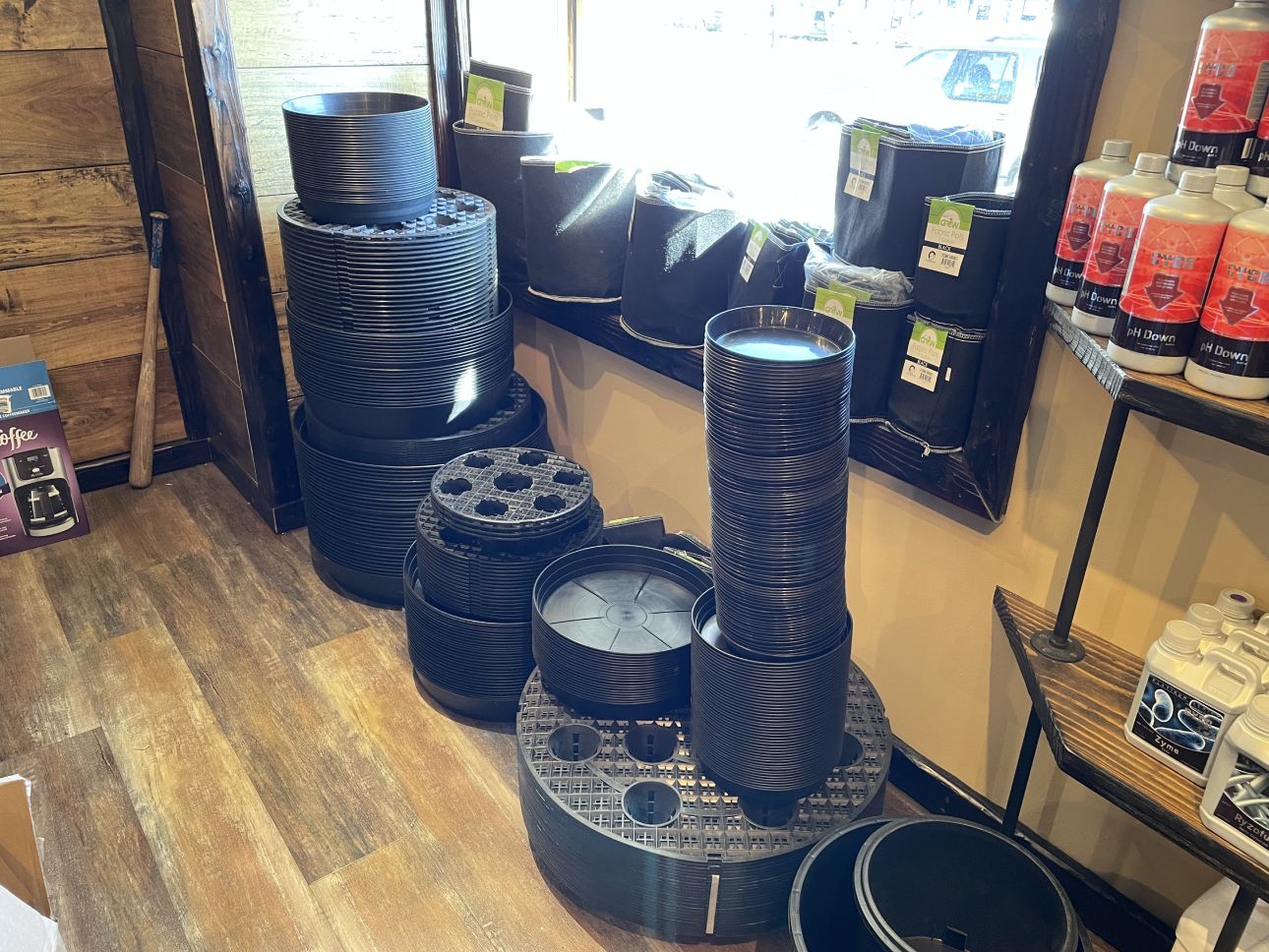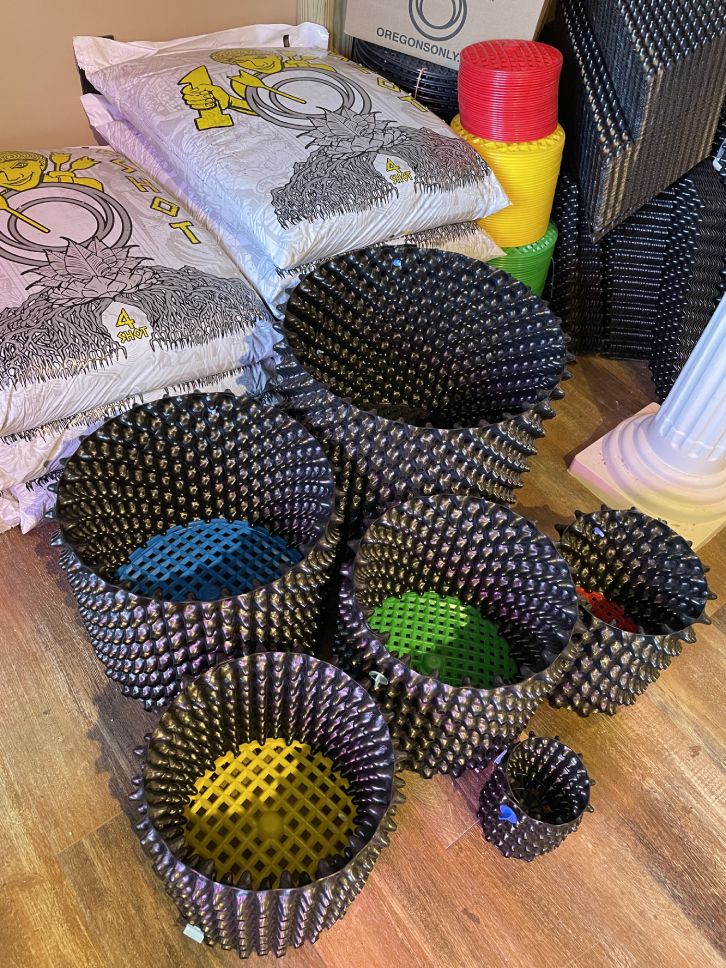Taking Advantage Of the Power of Hydroponics: a Deep Dive Into Utilizes and Various Types
In the realm of modern agriculture, hydroponics has become an approach that tests typical farming practices by providing a space-saving and water-efficient choice. The utilization of hydroponic systems opens up a globe of opportunities for growing plants in varied settings, inevitably influencing food manufacturing and sustainability. As we navigate via the elaborate landscape of hydroponics, exploring its different types and applications, a deeper understanding of its prospective to revolutionize farming practices and address global food safety and security issues starts to unravel.
Benefits of Hydroponic Farming
Undoubtedly, the advantages of hydroponic farming are becoming increasingly identified in modern agricultural methods. Hydroponic farming provides numerous benefits over standard soil-based farming. Among the primary advantages is water performance; hydroponic systems make use of up to 90% less water compared to conventional farming methods. This decrease in water usage is essential in combating water shortage issues worldwide.
Moreover, hydroponic farming permits higher control over nutrient degrees, resulting in faster plant development and greater returns. By providing essential nutrients straight to the plant roots, hydroponic systems promote much healthier and extra robust plant growth. Furthermore, the regulated atmosphere of hydroponic systems decreases the risk of pests and illness, lowering the demand for hazardous chemicals and herbicides.

Common Kinds Of Hydroponic Equipments
Provided the numerous benefits of hydroponic farming, it is necessary to check out the different usual sorts of hydroponic systems utilized in modern-day agriculture. One common type is the Deep Water Society (DWC) system, where plant roots are immersed in a nutrient service. An additional common system is Nutrient Movie Method (NFT), which entails a thin movie of nutrient-rich water flowing over the origins - The Indoor Earthworm. The Ebb and Flow system, likewise known as Flooding and Drainpipe, regularly floodings the plant roots with nutrient option prior to draining it. Aeroponics sticks out for its method of putting on hold plant roots airborne and misting them with a nutrient solution. Drip systems supply a regulated amount of nutrient remedy directly to the plant's base. Wick systems, the easiest form of hydroponics, use a wick to passively provide nutrient service to the plant origins. Each of these systems offers distinct advantages and caters to different plant kinds and development stages in hydroponic agriculture.
Nutrient Movie Method (NFT) System

One of the crucial advantages of the NFT system is its water efficiency. The Indoor Earthworm. Since the nutrient option is recirculated in a shut system, this technique makes use of considerably much less water contrasted to standard dirt farming. In addition, the NFT system is space-efficient, making it ideal for indoor farming or in areas with limited room for traditional agriculture
Nevertheless, the NFT system requires careful surveillance and upkeep to make sure the continuous flow of water and nutrients. Any type of disturbance in the circulation can quickly affect plant health and wellness. In general, the NFT system uses a lasting and efficient method to expand plants hydroponically, especially for crops that prosper in well-oxygenated origin atmospheres.
Deep Water Society (DWC) System
Moving from the Nutrient Film Technique (NFT) system, the Deep Water Culture (DWC) system is a hydroponic technique that includes putting on hold plant more information origins straight in a nutrient solution. Unlike NFT, where origins are continuously exposed to a thin film of nutrient service, DWC plants have their roots submerged in a reservoir loaded with oxygenated vitamins and mineral water. The roots dangle in the nutrient solution, enabling straight uptake of water and necessary nutrients.
Among the essential benefits of the DWC system is its simplicity and low maintenance needs. The consistent access to oxygen and nutrients advertises rapid development and higher yields. DWC systems need ample aeration to protect against root rot and make certain ideal nutrient absorption. Regular monitoring of pH degrees and nutrient concentrations is crucial to protect against imbalances that might hurt plant health and wellness.
Aeroponic System
A cutting-edge approach in hydroponics cultivation, the Aeroponic System uses a misting or misting system to deliver nutrients directly to plant origins suspended in the air. This system is recognized for its capacity to promote rapid development and efficient nutrient uptake due to the direct shipment of go to the website nutrients to the origins, permitting the plant to concentrate its power on growth rather than searching for nutrients.
One of the essential advantages of aeroponics is its water performance, as the system makes use of substantially much less water compared to traditional soil-based growing techniques. Furthermore, the specific shipment of nutrients straight to the roots can result in higher yields and faster growth rates. While aeroponics can be a lot more intricate to establish and keep contrasted to other hydroponic systems, its potential for raised plant growth and performance makes it a prominent selection for business growers and hydroponic enthusiasts looking for ideal results.
Verdict
To conclude, hydroponic farming provides countless benefits and various kinds of systems to select from. The Nutrient Film Method (NFT) system, Deep Water Society (DWC) system, and Aeroponic system are among the most common methods made use of in hydroponics. Each system has its very own advantages additional info and restrictions, making it important for farmers to carefully consider their demands and choices before selecting one of the most appropriate system for their plants.
Unlike various other hydroponic systems where plants are immersed in a nutrient solution, in the NFT system, the roots are subjected to the water just in a superficial movie.Moving from the Nutrient Film Method (NFT) system, the Deep Water Culture (DWC) system is a hydroponic method that involves putting on hold plant roots straight in a nutrient option.An innovative method in hydroponics growing, the Aeroponic System makes use of a misting or fogging system to provide nutrients directly to plant roots suspended in the air. The Nutrient Film Method (NFT) system, Deep Water Culture (DWC) system, and Aeroponic system are among the most typical methods made use of in hydroponics. Each system has its own advantages and limitations, making it necessary for farmers to carefully consider their demands and choices before selecting the most suitable system for their crops.